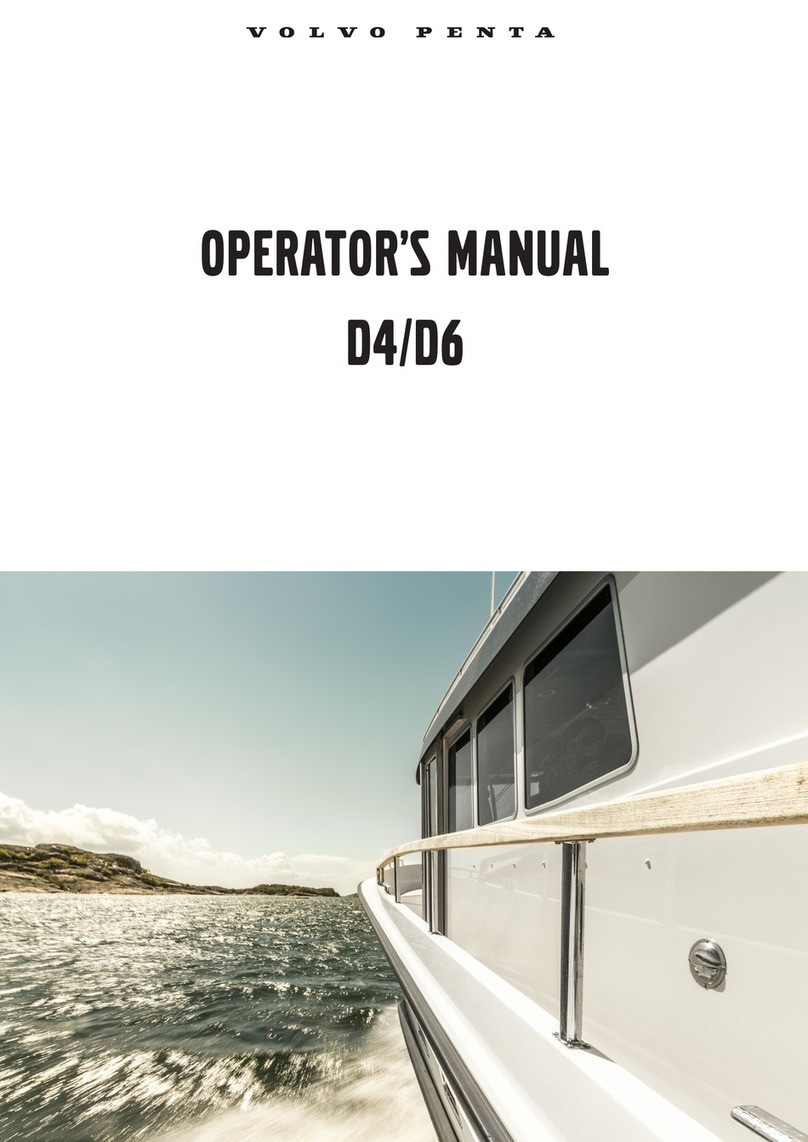
essel Control (EVC) system is
called distributed system. The principle of a distrib-
have many small electonic units,
called nodes, located on suitable places in the boat.
The EVC nodes are the Powertrain Control Unit
station Control Unit (HCU).
Nodes are located close to the components they
control. A helm node is located
powertrain node is mounted in the engine room.
Each node controls a number of adjacent compo-
nents, for example sensors, controls, instruments and
Each PCU and HCU is programmed for a specific
engine individual. On the PCU and HCU there is a
spond to the sticker on the engine.
A data bus, a CAN bus, connects the nodes to each
other. Together they form a network and exchange
information and take advantage of
which all components are connected reduces wiring
CAN stands for Controller Area Network, an industry
standard for communication between nodes in distr
A distributed system supports a growing multiplicity
nodes can be connnected to the network with mini-
be created by letting the nodes interact and combine
their capabilities, creating a more useful and safe
Engine speed and gear shift
is handled electronically.
The reverse gear or stern drive has high speed shift-
ing protection. Dual function electronic controls works
in the EVC system as well as mechanical controls
Engine synchronization results in better comfort,
good fuel ecomomy and minimized wear due to less
vibration and reduced noise level. To enable syn-
chronization the master (port) and slave (starboard)
able to communicate. Therefore a
synchronization cable has to be installed at the each
a serial communication bus. The
serial communication bus in combination with EVC
radically reduces wiring and
The EVC system tachometer is mandatory for boats
with EVC, unless the optional EVC system
is installed. The tachometer display shows operation
information, information massages and
user selects what operation information to display
displayed at one and the same
The EVC system tachometer and control panel is
also used when calibrating
considerably improved compared
wer trim systems. EVC in-
troduces a new trim panel with the same design as
other EVC control panels. If you have a twin engine
installation the stern drives can be both individually
and simultaneously controlled.
Trimming in and out can be calibrated to suit the spe-
when engine is running above a certain rpm.
The Power trim control panel shall be connected to
stern drives has connectors for the power trim angle
sensor and the power trim pump.
The EVC system display is a complement or replace-
ment for EVC system tachometer and optional in-
struments. The display shows operation information,
information massages and alar
what operation information to display with the buttons
on the display. The EVC system display can display
more than one operation information at one and the
The display also has access
display mode and calibration functions as
system tachometer display.
A trim indicator sender is included in all aquamatic
can be displayed on the EVC
system tachometer. It is also advised to install a
instrument. The instrument shows trim angle and trim
range. If a trim instrument is used it must be connect-
Fuel level can be displayed on the EVC system
chometer if a (3-180 ohm or 240-30 ohm) fuel level
sender is installed in the fuel tan
PCU–engine cable harness. If a
fuel level gauge is used it must be connected to the






























